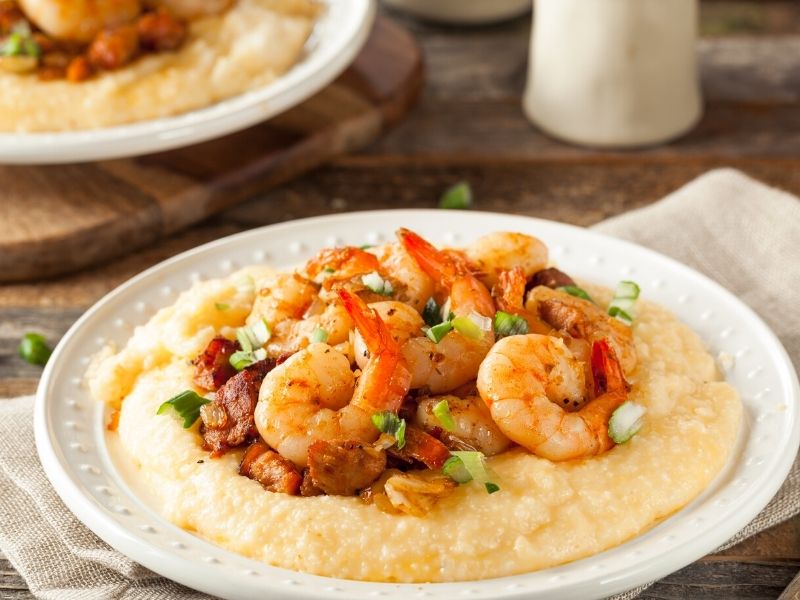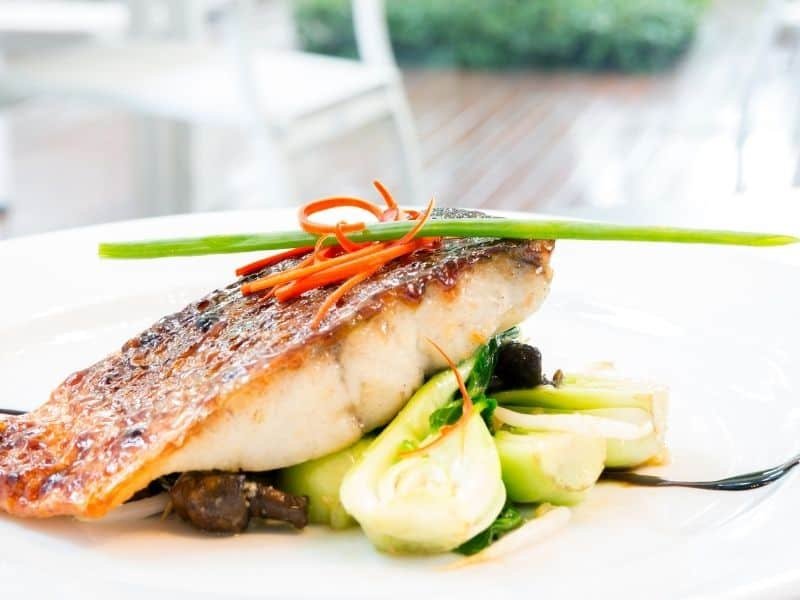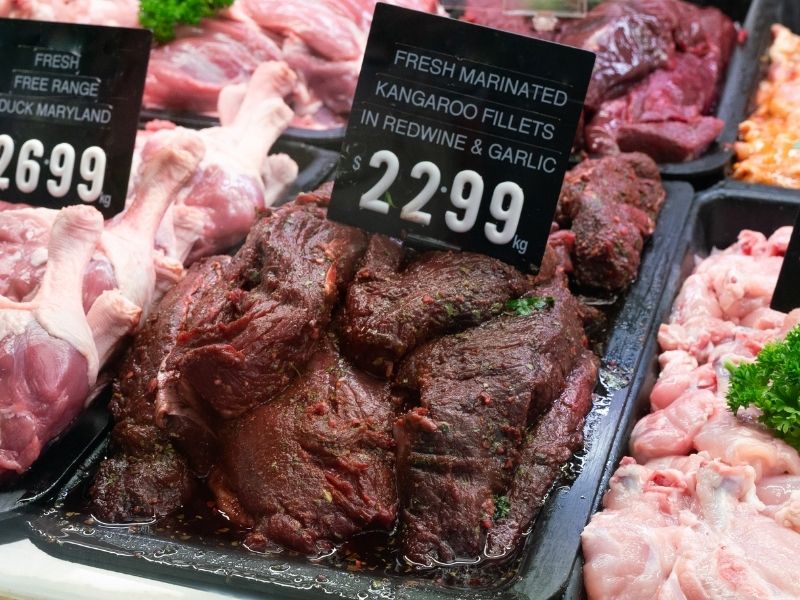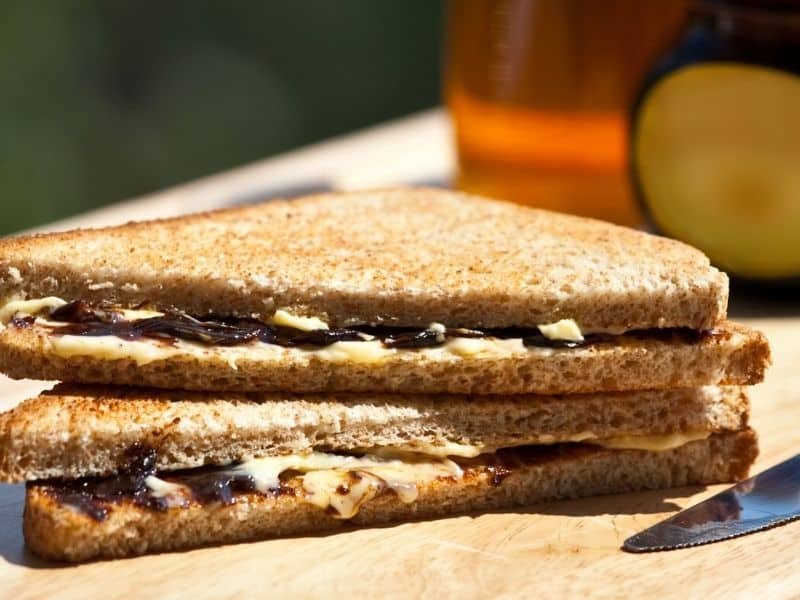Have you ever wondered what grits taste like? The taste of grits can vary depending on factors such as the type of grits used and the cooking method applied.

Generally, grits have a mild corn flavor with a slightly creamy and grainy texture. However, the taste can range from subtle to robust, depending on whether they are made from hominy, cornmeal, or other variations.
Additionally, the cooking method, such as using water, milk, or broth, can also influence the overall taste profile of grits. Understanding these variations in taste is essential for appreciating the diverse culinary possibilities that grits offer.

What Does Grits Taste Like?
Grits have a bland flavor, but they soak up tastes readily when cooked by adding ingredients such as milk or butter before serving.
Grits served with additional fat are sometimes called “creamy” or “hominy grits” instead of regular grits. When cooked, grits form a corn mush with a chewy bite.
So basically, the flavor of grits depends on the type of grits and the cooking method.
Here we compile what people thought of what grits taste like:
Types of Grits
- Instant grits taste bland, whereas stone-ground heirloom corn grits will have a more complex flavor.
- There are many different types of corn, and each one creates a unique type of grit with subtle taste distinctions.
- The taste of white corn is more mineral and floral, whereas the flavor of yellow corn is more accurate to corn flavor.
Methods of Cooking
- Grits must be eaten warm: this is a core part of the experience. The taste becomes less flavorful if allowed to cool, and the consistency changes.
- Grits are essentially cereal grains made from dried ground corn which must be cooked thoroughly before eating it. At their most basic, they are very dull. But, add salt butter, and cheese, and you’ve got something. So, if you want to know what grits taste like, you need to be more specific.
- Whatever you season them with. Cheese, salt, butter ….
- “Grits taste like rice” is inaccurate, though, so it’s that grits, like rice, taste like what you put on them. I’ve seen cheese on grits and butter on grits, but never just plain grits.
Acquired Taste
Grit is an acquired taste. Most people who enjoy them grew up eating them combined with something flavorful.
On the other hand, some people learn to enjoy grits with spices and seasonings added.

What is Grits?
What exactly are grits?
Grits is a Native American cuisine from the Southern United States that consists of ground corn (maize) that has been processed into small particles.
Grits are found throughout the Southeastern United States. However, they are most closely associated with southern cuisine owing to their history as a low-cost staple food for poor farmers and their simplicity of preparation.
Grits are a thick, creamy meal. Cooked grits may be spiced and served with sautéed shrimp, which can be seasoned in various ways.
What are grits made out of?
Grits are a thick, creamy porridge-like consistency produced by cooking maize (Maize) in various liquids, including water, milk, or broth.
What are the health benefits of grits?
Grits are a very nutritious food. Vitamin C, thiamin, and iron are present in small amounts, but carbohydrates account for most nutrients.
Because the outer husk has not been removed during production, whole-grain grits include more fiber than other processed grains.
Whole grains can help lower cholesterol levels, reduce the risk of heart disease, type-II diabetes, and various cancers.
Grits can be used as a substitute for bread crumbs in recipes like meatloaf or homemade fried chicken. This is because grits are less processed than bread crumbs, which provides more nutrients per serving.

How Can We Eat Grits?
Types of Grits
Before you sit down to a hearty bowl of grits, you should know which type to use.
Stone-ground Grits
This less-processed type of grits is derived from whole dried corn that has been crushed finely between two stones in a grist mill, and it’s often known as stone-ground grits.
They’re more like the old-fashioned grits in that they have a somewhat toothier texture and richer corn flavor.
Quick or Regular Grits
Quick and regular grits are more processed compared with the first one.
The granulation, or the degree of fineness the grit is ground, makes the difference between quick and regular grits. Quick grits are finely ground and can be cooked in 5 minutes, whereas regular ones take 10 minutes.
Instant Grits.
Instant grits, like instant oatmeal, are prepared in minutes by boiling water. The disadvantage is that they aren’t as flavorful as the last two options.
Hominy Grits.
Corn grits are prepared from kernels that have been soaked in a water solution that softens and rids the outer hulls and germs.
They are dried and ground into hominy grits.
What’s the difference between grits and polenta?
Grits and polenta are both made of ground corn, but the variety of corn makes a big difference.
Polenta is prepared from yellow corn, whereas ground grits are generally produced from white corn (or hominy). As a result, the texture and size of polenta will be rougher, while grits will be more refined and more creamy.
Grits will take on the tastes of whatever you’re cooking them with, in this case, chicken broth. The polenta will pick up some of the flavors but not as much as the grits since it already has a lot of tastes.
Are grits the same as cornmeal?
Cornmeal is simple food made from ground dried corn. It’s available in a range of grinds ranging from coarse to fine, but it’s a straightforward product.
On the other hand, while they resemble coarse cornmeal, Grits are typically manufactured from hominy rather than dried corn.
How Can We Cook Grits?
Grits are often prepared in boiling water or milk (or both) and simmered for a long time until soft.
The proportion of liquid to grits varies considerably depending on the grits used, but a typical ratio is four parts liquid to three parts gritty.
How to Make True Southern-Style Grits?
Southern grits are rich, creamy, and incredibly easy to make.
Traditional Southern Grits Recipe
Ingredients
- 4 cups water
- 1 1/2 cups stone-ground corn grits, such as Anson Mills
- 2 dried bay leaves
- 1/2 teaspoon kosher salt
- 8 tablespoons (1 stick) unsalted butter
- 2 ounces Parmesan cheese
- 1 cup heavy cream
Instructions
Heat and soak the grits
- Place 4 cups water, 1 1/2 cups grits, 2 dried bay leaves, and 1/2 teaspoon kosher salt in a large pot or Dutch oven and bring to a boil over high heat.
- Immediately remove from the heat, cover, and set aside for 15 minutes.
- Meanwhile, prepare the butter and cheese.
Prepare the butter and cheese
- Cut 8 tablespoons of unsalted butter into 8 pieces.
- Grate until you have 1/2 cup Parmesan cheese.
Boil the grits
- Uncover and return the grits to a boil over medium-high heat.
- Cook over low heat for 20 to 25 minutes, occasionally stirring with a whisk and scraping the bottom to avoid clumping or burning.
Finish the grits
- When the water is almost entirely absorbed, and the grits are still a little al dente (tender with a toothsome bite), they’re done.
- Remove the pot from the heat. Remove and discard the bay leaves.
- To serve, stir in the butter, cheese, and 1 cup heavy cream just before serving.
Tips
- Soak the grits before cooking. Grits that have been soaked overnight cook faster and are creamier. You’ll then finish them on the stovetop slowly.
- Add the cream, butter, and cheese to your finished grits. The flavor of grits seasoned with cream is lovely, and you avoid the cooked-milk taste of other methods.
- Grits can be prepared with water alone, but the texture is improved when milk is added to the cooking liquid. Simmering for around 20 minutes in this case rather than boiling rapidly produces them very sticky. When cooked with only water, they become excessively sticky if overcooked.
What to Serve with Grits?
Grits have a mild flavor and are very nutritious. Grits can be served with shrimp, cheese, or butter for an easy weekday meal.
You can serve grits with anything! From breakfast to dinner, there’s no wrong way to eat grits.
Here are some ideas to try:
Breakfast
- Serve grits alongside eggs, sausage, bacon, ham, or even pancakes.
- Serve grits as a side dish with fried chicken, pork chops, or fish.
- Make a delicious bowl of grits topped with scrambled eggs and cheese.
Dinner
- Make a hearty soup with grits. Try adding chopped vegetables such as broccoli, carrots, celery, green beans, or peas.
- Add shredded meat such as beef, pork, turkey, or lamb.
- Top grits with sautéed mushrooms or onions.
- Top grits with roasted peppers, tomatoes, or avocado.












